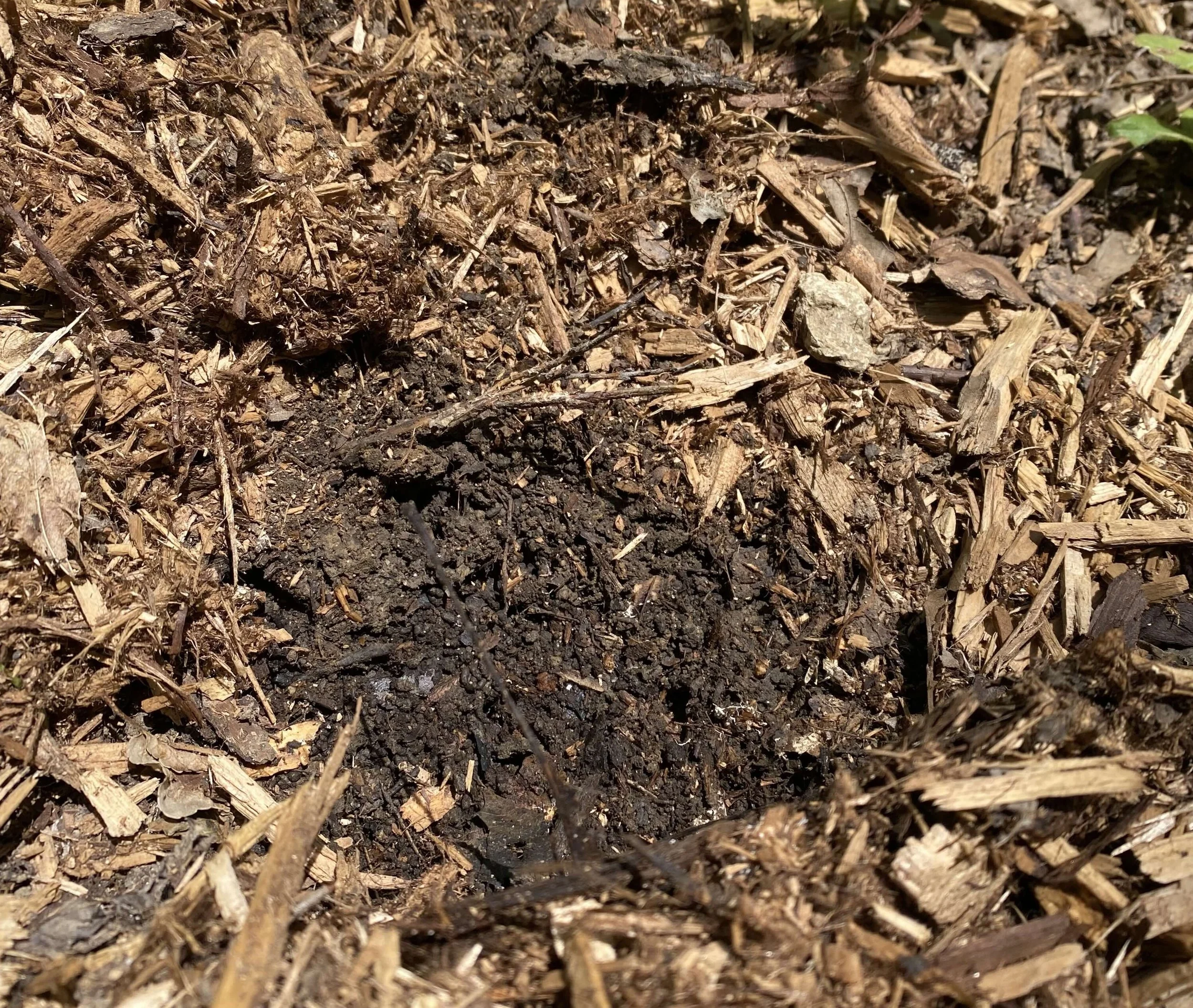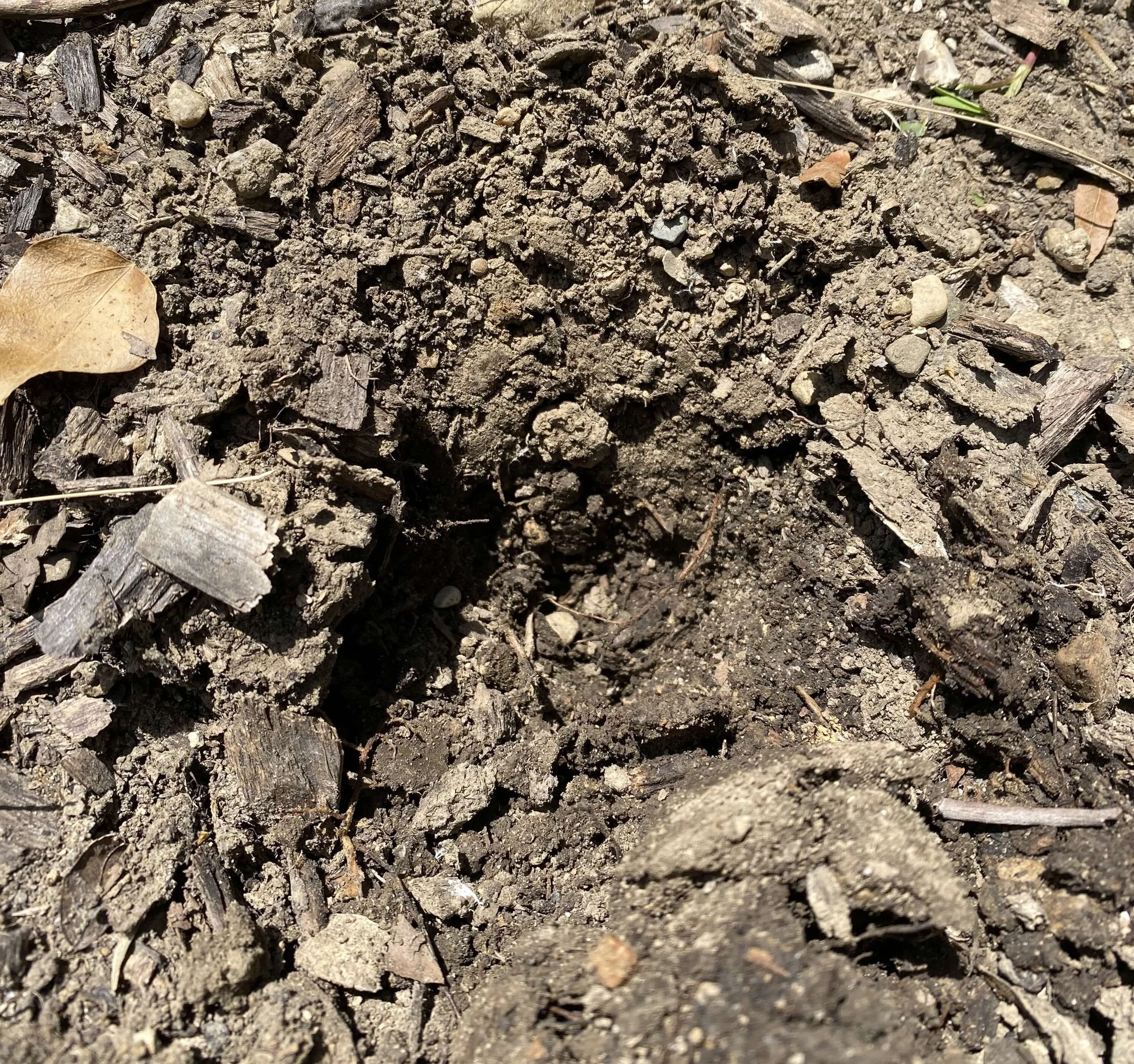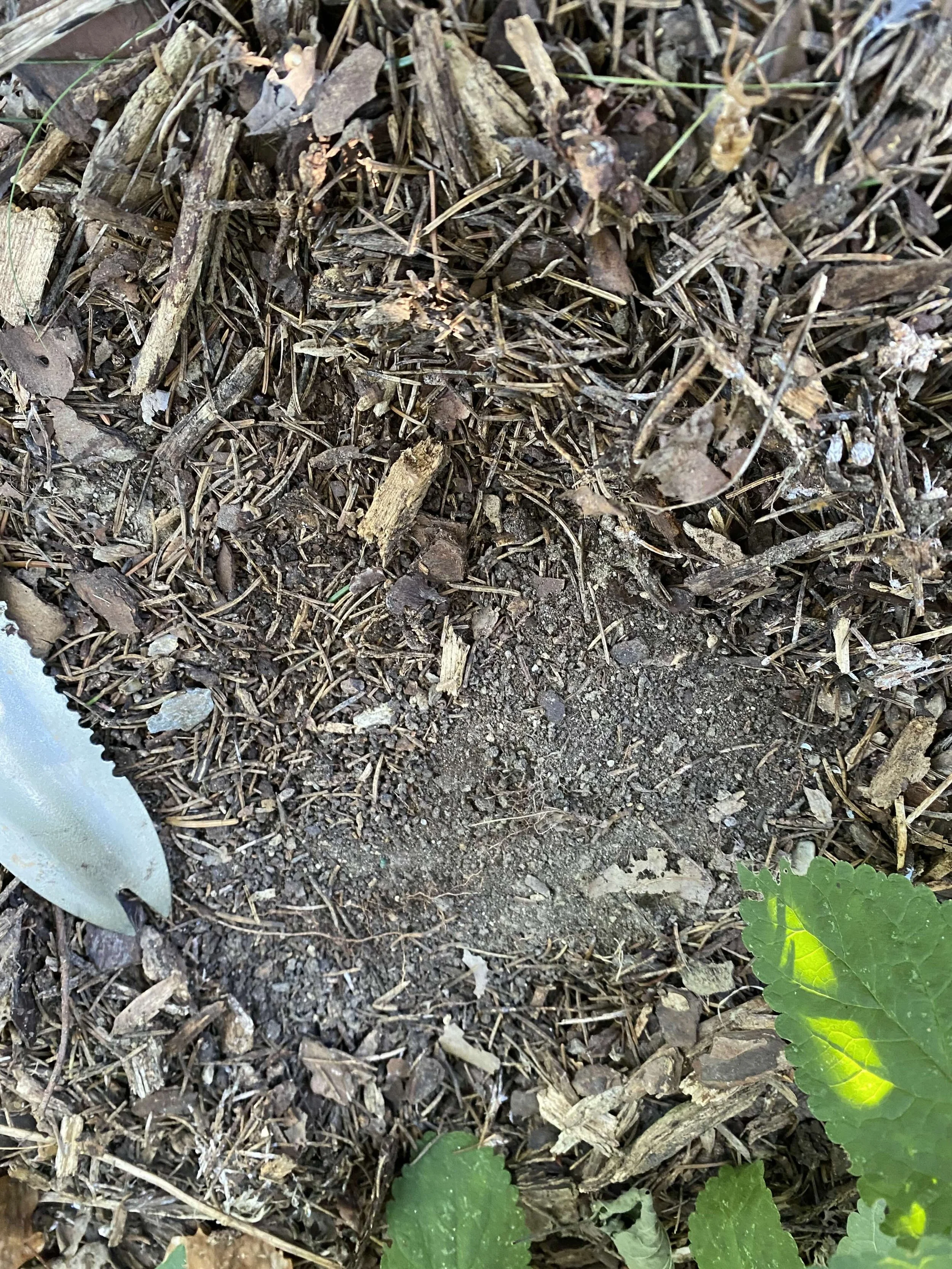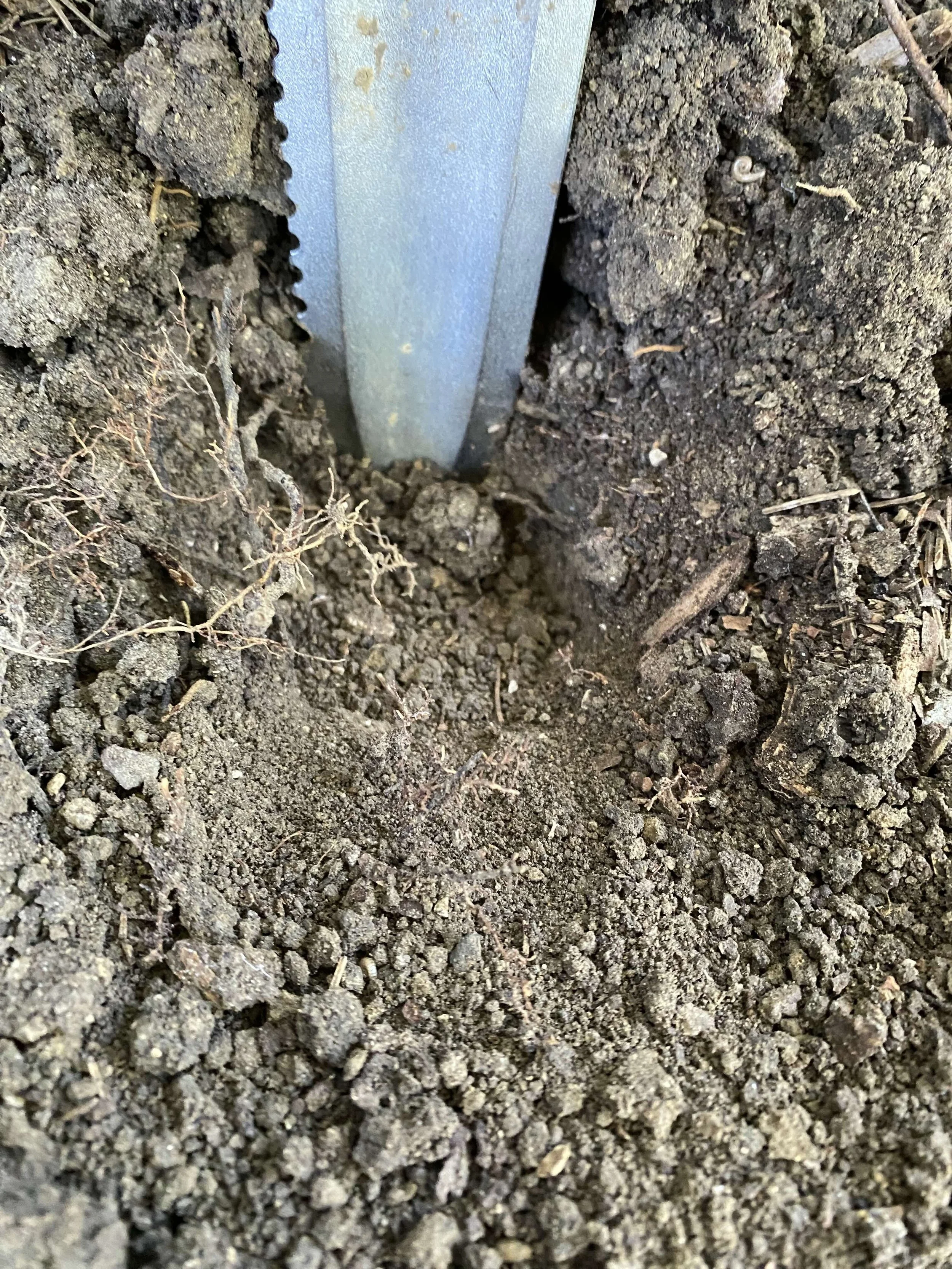Best Watering Practices for a Healthy Garden
Many of us live in suburban areas where our water is brought to us from nearby aquifers that are quickly being depleted (ack!). Let's do what we can to set our gardens up for success and use only the water we need.
Being extremely hot doesn't mean your plants are in need of water.
First, check your soil before you turn on the hose. Take a trowel and push the mulch aside.
For this garden, the soil was moist right below the mulch. Watering is not necessary. Replace the mulch, get yourself a cold beverage and some shade.
If the soil is dry just below the mulch, or it's a bed without mulch, dig into the soil 1-2 inches. If the soil looks darker from moisture and feels cool and moist, you don't need to water.
During a heat wave or dry spell, check the soil again in 2-3 days and reevaluate.
For this garden, the surface soil was dry, but after digging about 1 inch below the surface, there was moisture. This is right where the roots of the plants are, they have all the moisture they need, no need to water.
For this garden below, the situation is different. It hasn’t rained in a few weeks (at the time the picture was taken) and everything is starting to show drought stress.
For a garden that is less than 3 years old, watering is probably necessary at this point for their survival since their root systems aren’t fully established, yet. At this level of dryness, the soil becomes hydrophobic and resists water. Water gently to help the soil absorb water again.
How to Water
When the soil tells you it's time to water, it's best to water for a long time.
If you're using a sprinkler, that means letting it run for 45-60 minutes. After that time has elapsed, check the soil to make sure it was thoroughly saturated by digging 1-2 inches below the surface. If it's still dry at 1" below the surface, turn the sprinkler back on.
If you're watering by hand with a hose and gentle shower, spray small plugs for 10 seconds each, at least, and spray shrubs for 45 seconds each, at least. The idea is to saturate the root ball and surrounding soil.
Remember: watering should be done infrequently and deeply to help encourage deep root growth. Quick watering done often, will result in a bountiful bed of weeds and possibly root rot and death.
Troubleshooting
“But, Kelsey, my plant is wilting! Doesn’t that mean it needs water?!”
Not necessarily! The plant pictured below (Showy Goldenrod, a plant that likes dry soil) has plenty of soil moisture, in fact it had rained heavily the day before this picture was taken. This Goldenrod is wilting because it’s hot and humid and can’t keep up with transpiration (the movement of water through the plant during photosynthesis) which results in a lack of turgidity in the leaves and stems. Watering a plant in this state isn’t going to help it, it could even kill it. Overly wet soils for plants that prefer dry soil like this one, can result in root rot which equals death.
For a lot of our prairie plants, especially those adapted to dry environments, they “know” how to deal with the lack of water because they have roots that reach deep into the soil or have a modification for storing water (taproots, corms). If the drought is severe and your planting is well established (3+ years), the plants may go dormant until conditions improve, just like the turf grass does. When conditions improve, everything will resume growing.
That concludes our botany lesson for the day.
Showy Goldenrod wilting from heat and high humidity. This plant does not need to be watered.
Water for Other Species
When the rain stops and our creeks dry up, the animals of our landscapes get thirsty too. And when I say animals, I’m including insects in that statement, yes, insects drink water too. Provide a source of water for your garden visitors, it doesn’t need to be anything fancy or even very big. A chipped plate, an old plant saucer, or a baking sheet will do. Add some rocks for small animals to stand on or crawl out on (otherwise it’s a death trap for insects!). Change the water every 2-3 days to keep it fresh and discourage mosquito development (added bonus, it acts as a mosquito trap!).
A simple watering dish in the garden for animals big and small.





